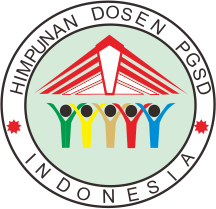Multiple Intelligence: Learning with Interactive eGuide Book for Enhancing Young Children’s Intrapersonal and Interpersonal Intelligences
DOI:
https://doi.org/10.30595/dinamika.v15i1.17342Keywords:
interactive eGuide book, learning activities, young children, intrapersonal, interpersonalAbstract
Young children aged 4 to 6 years old experience greater impact on their emotional and social development compared to adults during the lockdown period. The prolong absence from school confines their exposure to engage outdoor activities and learning activities with peers. Consequently, they tend to be clingier to their parents. Therefore, this study aims to develop intrapersonal and interpersonal intelligences among young children through the interactive eGuide book created in this study. The interactive eGuide book contains professionally selected learning activities which were carried out for four weeks with the facilitation of parents. The samples involved a total of 12 parents residing in Selangor, Malaysia who had given consent to participate in this study. The young children’s reactions related to intrapersonal and interpersonal intelligences were observed and recorded. Semi-structured interviews were conducted to explore the children’s development before and after utilising the interactive eGuide book. Thematic analysis was done to identify themes and subthemes. The findings were positive as there was a great intrapersonal and interpersonal improvement among the young children. They were able to regulate their emotions and build self-confidence; they were more expressive to communicate their feelings with others and demonstrated decision-making skills. The interactive eGuide book is proposed to also be used in normal situations especially by first-time parents and preschool teachers to develop children’s intrapersonal and interpersonal intelligences so that they are able to analyse their strengths and weaknesses, work collaboratively and create worthwhile relationships since young.
References
[1] Gardner, H. (2011) Frames of Mind: The Theory of Multiple Intelligences. Basic Books, New York.
[2] Gardner, H., & Moran, S. (2006). The science of multiple intelligences theory: A response to Lynn Waterhouse. Educational Psychologist, 41(4), 227–232.
[3] Gardner, H. (1983). Frames of mind: The theory of multiple intelligences. New York, NY: Basic Books.
[4] Tottenham, N. (2017). The brain emotional’s development. Cerebrum. US Census Bureau, 2020. National Population by Characteristics: 2010-2019. Natl. Popul. by Charact. 2010–2019.
[5] Singh, S., Roy, D., Sinha, K., Parveen, S., Sharma, G., & Joshi, G. (2020). Impact of COVID-19 and lockdown on mental health of children and adolescents: A narrative review with recommendations. Psychiatry Research-Neuroimaging, 293, 113429. https://doi.org/10.1016/j.psychres.2020.113429
[6] Sancho, N. B., Mondragon, N. I., Santamaria, M. D., & Munitis, A. E. (2021). The Well-being of children in lock-down: Physical, emotional, social and academic impact. Children and Youth Services Review, 127, 106085. https://doi.org/10.1016/j.childyouth.2021.106085
[7] Bradshaw, C., Atkinson, S., & Doody, O. (2017). Employing a Qualitative Description Approach in Health Care Research. Global Qualitative Nursing Research, 4, 1–8. https://doi.org/10.1177/2333393617742282
[8] TheStar. (2020, December 28). Covid-19: All districts in S’gor now red zones, says Health Ministry. https://www.thestar.com.my/news/nation/2020/12/28/covid-19-all-districts-in-s039gor-now-red-zones-says-health-ministry
[9] Ong, E. (2021, January 21). List of COVID Red Zones, New Clusters, and Places with Confirmed Cases in Malaysia. https://www.klook.com/en-MY/blog/covid-19-red-zones-malaysia/
[10] Braun, V., & Clarke, V. (2006). Using thematic analysis in psychology. Qualitative Research in Psychology, 3(2), 77–101. https://doi.org/10.1191/1478088706qp063oa
[11] Gerchman, R. M. (2021). Embodiment and mindful learning: Engaging the mind and body to dispel vulnerability. Thinking Skills and Creativity, 40, 1–5. https://doi.org/10.1016/j.tsc.2021.100844
[12] Rubegni, E., Gentile, V., Malizia, A., Sorce, S., & Kargas, N. (2020). Child–display interaction: Lessons learned on touchless avatar-based large display interfaces. Personal and Ubiquitous Computing. https://doi.org/10.1007/s00779-020-01451-x
[13] Mineshita, Y., Kim, H.-K., Chijiki, H., Nanba, T., Shinto, T., Furuhashi, S., Oneda, S., Kuwahara, M., Suwama, A., & Shibata, S. (2021). Screen time duration and timing: effects on obesity, physical activity, dry eyes, and learning ability in elementary school children. BMC Public Health, 21(422), 1–11. https://doi.org/10.1186/s12889-021-10484-7
Downloads
Published
How to Cite
Issue
Section
License
Authors who publish with this journal agree to the following terms:
Authors retain copyright and grant the journal right of first publication with the work simultaneously licensed under a Creative Commons Attribution License that allows others to share the work with an acknowledgement of the work's authorship and initial publication in this journal.
Authors are able to enter into separate, additional contractual arrangements for the non-exclusive distribution of the journal's published version of the work (e.g., post it to an institutional repository or publish it in a book), with an acknowledgement of its initial publication in this journal.
Authors are permitted and encouraged to post their work online (e.g., in institutional repositories or on their website) prior to and during the submission process, as it can lead to productive exchanges, as well as earlier and greater citation of published work (See The Effect of Open Access).

Dinamika Jurnal Ilmiah Pendidikan Dasar is licensed under a Creative Commons Attribution 4.0 International License.













